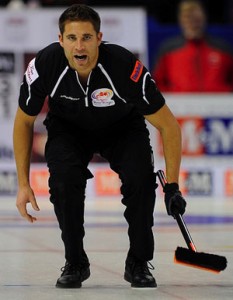Fit to Curl: Rested and ready
Much of my focus when it comes to proper training for curling is about active exercise —strength training, cardio endurance training, cardio interval training, flexibility work. But I’ve learned — and yes, it took awhile — about the value of an activity that involves no effort at all but is essential to being prepared to curl well.
Sleeping.
Just like my belief in overall fitness wasn’t as strong in my younger days, you could say that my concern about getting the proper amount of sleep is a fairly recent development. There was definitely a time when I wasn’t too concerned about a late night followed by the early draw.
Not so much any more. To be sure, I still like to find time to socialize with teammates, fellow competitors and fans when I’m at an event. But I also know that I need a good night’s rest if I’m going to play well the next day so I don’t push my luck.
I’ve always been a guy who likes a good solid eight hours of sleep each night and, if you’ve read Fit to Curl — or seen me on the ice in the morning looking a bit grumpy — I’m still no fan of the first draw of the day. I know that mental focus is incredibly important and, when you’re tired, it’s probably the first thing that goes.
Not only do you need enough sleep, you need good sleep. That means deep REM sleep — the kind that occurs when your sleep is uninterrupted for a number of hours — to really feel refreshed the next day. When you don’t, your circadian rhythm is thrown off and you feel sluggish the next day. (Yes, I know REM sleep might be tough when your roommate snores or the party that was at the club has landed outside your door. I’m just offering up the facts here.)
This year, I’ve also had to deal with the work-rest challenges that most curlers face all the time. I’m juggling a full-time job, a busy competitive schedule and a full slate of team appearances. Not only has Team Martin had multiple trips to Toronto and other Canadian cities but we also had a swing through northern Alberta, conducting clinics and helping organizers raise more than $50,000 for junior curling programs in the Peace region. On behalf of our team and me, I would like to extend a big Thank You to Fort St. John, Hines Creek and Slave Lake for the wonderful hospitality we received.
I’m thrilled that we can help boost the profile of our sport and it’s been a pleasure to be involved in so many of these activities. But it also means that I’m often working on six hours of sleep or less each night. (I’m sure that curlers with young children and demanding bosses are getting their tiny violins out right now. I realize I’ve been fortunate these past few years.)
My schedule when I’m not curling has meant a few changes for how I approach rest during events. For starters, I definitely make sure I pick my spots when it comes to off-ice activities. I’ve also realized that my more structured work schedule means that I’m probably going to be up at 7 AM or so each morning, even when I’d really like to sleep later. After three years when curling was my sole focus, my body clock programming is different and I need to recognize that.
Now, if we happen to get lucky and qualify A-Side so we have a late game or a day off, I still like to get up at a decent hour, have a light breakfast and get a quick workout in. The exercise energizes me so I’m ready to go later in the afternoon if we’re on the ice —instead of feeling sluggish because I’ve spent the day dozing in my hotel room. If you aren’t really feeling a workout, the point is to do something active and get on your feet. I will promise that you’ll feel sharper for that next game.
In the end, getting the rest you need — the rest that rewards you for your off-ice training – is about making smart choices. The social traditions of curling are rich and we need to continue that aspect of the game at every level. But if you want to feel good about how you play — and just feel good in general — you need to find a rhythm that works for you and recognize that the clock your body functions on during everyday life can’t suddenly change just because you’re curling.





